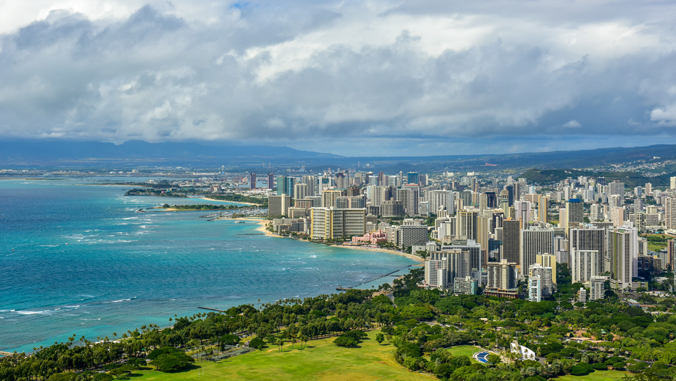
Data from the U.S. Census Bureau shows that Hawaiʻi was one of 10 states to experience a population decrease in 2018 and 2019. However, University of Hawaiʻi Economic Research Organization (UHERO) researchers in UH Mānoa’s College of Social Sciences estimate the slide is not expected to continue during the COVID-19 pandemic.
One might argue that the sharp rise in unemployment rates due to COVID-19 would result in a massive migration of people to the U.S. mainland. However, according to James Mak, UHERO research fellow and emeritus professor of economics, and Justin Tyndall, UHERO assistant specialist and assistant professor of economics, that will likely not happen immediately due to the increased difficulty of navigating a trans-Pacific move. There is also fear of a spike in COVID-19 cases in states such as California and Texas, the two most popular destinations for Hawaiʻi residents moving to the U.S. mainland in 2018.
UHERO experts said reduced out-migration numbers will likely result in more workers leaving the labor force and continued higher unemployment rates. Data also showed that fewer people moved to and out of Hawaiʻi during and shortly after the Great Recession from 2007–09.
Recent population decrease
Adjustments in a state’s population are attributed to changes in natural increase (births minus deaths), net immigration from foreign countries and net domestic migration. The state’s population has decreased for three consecutive years since 2017, most recently falling by 4,721 from July 2018 to July 2019.
Mak and Tyndall said consistent decline may indicate an ailing state facing major economic and social problems. It can also affect political representation and dampen the state’s economy.
They said more locals have been leaving Hawaiʻi due to the high cost of living—especially housing costs—and the lack of job opportunities suited to their skills and interests.

